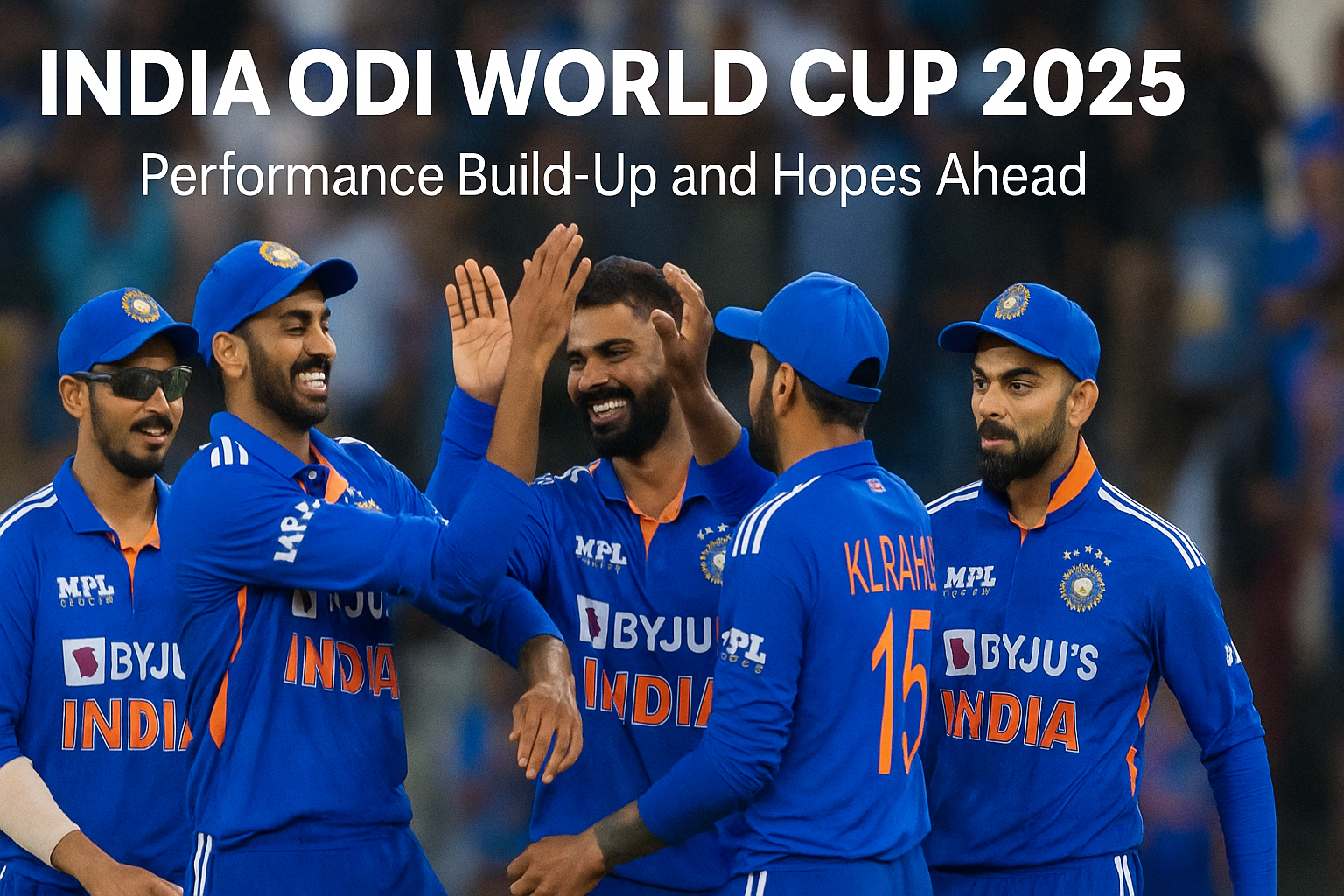India’s ODI Strategy: Laying the Groundwork for World Cup Glory
With the ICC Cricket World Cup being the biggest stage in the one-day international (ODI) format, every cricketing nation dreams of lifting that coveted trophy. India, a two-time champion, has always been a force to reckon with. But what sets their current ODI campaign apart? A deep dive into their recent tactics and squad evolution shows that this isn’t just another tournament—India is building up for something special.
Why ODIs Still Matter in a T20-Dominated World
Let’s face it—T20 cricket has taken the spotlight in recent years. It’s fast-paced, entertaining, and packed into a few hours. So, you might wonder: Are ODIs still relevant? For teams like India, the answer is a resounding yes.
While T20s may deliver instant thrills, ODIs remain a true test of strategy, stamina, and skill. Teams need batting depth, flexible bowlers, and brains behind the brawn. And with the World Cup still the biggest feather in international cricket’s cap, the 50-over format is far from dead.
India’s ODI Focus: A Calculated Shift
India’s team management, led by head coach Rahul Dravid and captain Rohit Sharma, has been quietly reshaping its ODI blueprint. They’re not just throwing names on the team sheet—they’re tailoring a unit that can handle pressure, adapt quickly, and peak at the right moment.
What’s Working for India?
This transition didn’t happen overnight. Several strategic moves are steering India in the right direction:
- Consistent Core Players: Players like Virat Kohli, KL Rahul, and Jasprit Bumrah offer experience and dependability.
- Bowlers Who Can Bat: The inclusion of all-rounders like Hardik Pandya gives India greater depth and flexibility, especially in crunch moments.
- Focus on Fitness and Fielding: The team is faster, fitter, and more agile on the field, minimizing extra runs and creating breakthroughs with sharp fielding.
Adapting the Batting Order
Gone are the days when India relied solely on their top three for big runs. The emphasis now is on a flexible middle order with the ability to accelerate or consolidate as required. KL Rahul as a wicketkeeper and middle-order stabilizer has been a smart move that balances the playing XI beautifully.
Meanwhile, younger talents like Shubman Gill are stepping up, bringing fresh energy to the team. Mixing youth with experience seems to be the winning formula.
Learning from the Past to Secure the Future
India has reached the knockout stages of several ICC tournaments in recent years but has fallen just short of the final hurdle. The reasons? Inconsistency in team selection, over-reliance on a few players, and a lack of game-time for backups.
This time, though, the script feels different. India isn’t just playing matches—they’re experimenting, testing bench strength, and identifying multiple game-plans. The objective is clear: be ready for anything the World Cup throws their way.
More Than Just Playing – It’s Planning
Between constant match-ups and evolving pitch conditions, modern cricket is a mental game as much as it is physical. India is investing in this big time:
- Analyzing oppositions thoroughly
- Trusting data and match analytics
- Focusing on role clarity for each player
If a player knows exactly what’s expected of him—whether it’s bowling economical overs in the powerplay or finishing off a chase under pressure—half the battle is already won.
The Jasprit Bumrah Factor
Let’s talk about the man whose return felt like India had found its missing puzzle piece. Jasprit Bumrah, often hailed as the game’s best death-over specialist, brings not only fiery pace but calm-headed leadership to the attack. His fitness has been a concern in the past, but seeing him back, managing his workload wisely, feels like a massive boost.
Can India bank on him through to the World Cup finals? Only time will tell. But one thing’s for sure—no opposition takes India lightly when Bumrah is in the XI.
Team Chemistry: The Secret Ingredient
You can have a team of eleven superstars, but if they don’t gel, you won’t go far. India’s current ODI squad seems to have struck that balance—blending format-specific roles with personal camaraderie.
Players back each other, celebrate each other’s wins, and perhaps most importantly, learn from setbacks together. This unity becomes crucial in high-pressure World Cup games where momentum can swing in the blink of an eye.
The Road Ahead: What Has to Click
Heading into the World Cup, India still faces a few challenges:
- Staying injury-free – Key players must be managed carefully to avoid breakdowns at crunch time.
- Finalizing the best XI – With so many options, the selectors must back the strongest unit and stick with it.
- Managing expectations – With a passionate fan base, pressure is inevitable. The team’s mental resilience will be tested.
To Wrap It Up…
If you’ve been following India’s recent ODI journey, the signs are encouraging. Rather than relying on flashy wins or individual brilliance, India is building a resilient, well-drilled side suited for marathon tournament play.
So, what’s the final verdict? While we can’t predict the future, one thing’s for sure: India isn’t just playing ODIs—they’re preparing for destiny.
Let’s keep our fingers crossed and hope this well-crafted strategy translates into World Cup glory!
What Do You Think?
Are you happy with the squad selection so far? Is India’s balance right, or should they make changes before the tournament kicks off?
Drop your thoughts and predictions in the comments below. Let the cricket conversations begin!
Make sure to follow us for more updates, player insights, and match predictions as we inch closer to the ICC Cricket World Cup!




